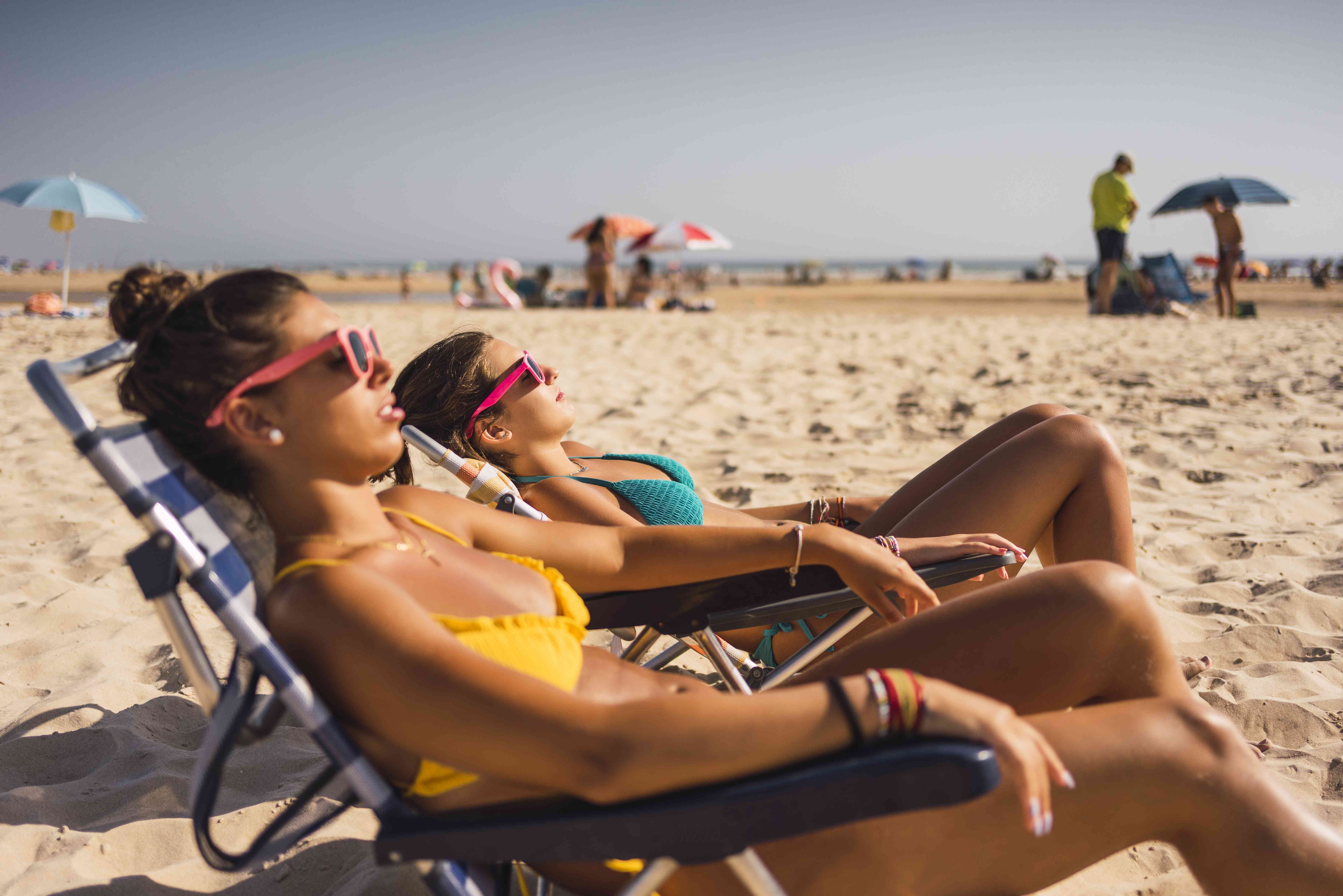Should You Tan When the UV Index Is High? Here's What Dermatologists Think About the Viral Trend Here's what you need to know before hopping on the UV index tanning trend

The latest TikTok tanning trend involves monitoring the UV index and timing sunbathing sessions to when it's high, but experts say that exposing yourself to strong ultraviolet rays is a bad idea
- TikTok creators are posting videos saying that people should tan when the UV index is high to achieve optimal results.
- However, UV index is designed to help people know when ultraviolet rays are the strongest so that they can protect themselves against sun exposure.
- Frequent exposure to strong UV rays can cause sunburn and lead to skin cancer, experts say.
When it comes to trying to achieve a summer tan, many people squeeze in sunbathing time when they can. But a recent social media trend involves taking a more strategic approach: lounging in the sun when the UV index is highest.
On TikTok, millions of users have posted videos about the UV index and tanning. In many of them, TikTokers tout the benefits of monitoring the index and timing sun sessions for when it’s at its peak—usually in the late morning and mid-afternoon. Some creators offer tips for maximizing tanning results, such as skipping sunscreen or applying baby oil.
However, experts warn that scheduling tanning sessions to coincide with a high UV index—especially with no protection—isn’t a good idea. Here’s what you need to know before catching rays when the UV index is high.

Manuel Arias Duran / Getty Images
What Is the UV Index?
The UV index provides a daily forecast of the expected intensity of ultraviolet radiation from the sun at a particular time and place.
Though TikTok tanning enthusiasts head outdoors when the UV index is highest, the Environmental Protection Agency publishes the index for the opposite reason: so that people can protect themselves from the sun when rays are strong.
The UV index is published as a color-coded scale from one to 11 and works like this:
- Low exposure: 1–2
- Moderate to high exposure: 3–7
- Very high to extreme exposure: 8+
Why UV Radiation Can Be Dangerous
While people might like the appearance of a sun-kissed look, exposure to intense UV rays comes with risks, both in the short and long term.
A prolonged tanning session—or even a minimal one—has the potential to result in a sunburn that can be painful or itchy. Skin that turns red or tan after sun exposure has also been damaged by UV rays; the discoloration is the body’s attempt to reduce further damage by producing melanin, the natural pigment that gives skin color.
Over time, tans and sunburns can raise the risk of developing mutations in skin cell DNA that can lead to skin cancer.
“The more times you get sunburned, the higher your risk,” Elizabeth Bahar Houshmand, MD, a fellow of the American Academy of Dermatology and practicing dermatologist from Dallas, Texas, told Health. She cited a study that showed five blistering sunburns before the age of 20 can increase your risk of melanoma, the less common but more deadly skin cancer type, by 80%. “That is not a number to forget,” she added.
Beyond sunburn and cancer, other health issues can crop up after exposure to UV radiation. A common one is the precancerous skin condition actinic keratoses, which look like small, scaly patches of skin. Too much UV exposure can also burn or inflame the eye’s cornea, make it harder for your immune system to combat infections, and even trigger migraines.
“It can also cause photodermatoses, which are skin conditions triggered or worsened by UV radiation such as rosacea, certain allergic conditions, and more,” Danilo C. Del Campo, MD, a dermatologist at the Chicago Skin Clinic in Chicago, told Health.
Then there are the unwanted cosmetic effects of too much UV radiation: premature aging of the skin, dark spots, and wrinkles.
Staying Safe in the Sun
Experts advise monitoring the UV index—but not to determine when to tan. Instead, it should be used to figure out when you should protect yourself from the sun.
When the index is low, the EPA says you don’t need much protection from the sun. But when it’s three or higher, you should seek shade and generously apply a broad-spectrum SPF of 30 or higher on skin not covered by clothing. The EPA also recommends wearing protective clothing, a wide-brimmed hat, and sunglasses.
Also, be mindful of where you are—white sand, snow, and water can reflect UV rays and double their intensity, Anthony M. Rossi, MD, a dermatologist at Memorial Sloan Kettering Cancer Center in New York City, told Health.
“Be sun smart,” he said. “You can still enjoy the outdoors without getting burned or becoming tan.”
As for applying baby oil or a sunless tanner before spending time in the sun, as some TikTokers suggest, Houshman strongly advised against it. Baby oil attracts UV rays, she explained, and sunless tanners contain dihydroxyacetone (DHA), which can trigger free radicals and accelerate skin damage.
But if you’re searching for a fresh glow, Houshman said there’s no problem with applying sunless tanner if you’re not headed into the sunshine right after. You can also opt for a spray tan. “There are so many better options [than sunning] if you want that look,” she said.
This story originally appeared on: Health News - Author:Kristen Fischer


















